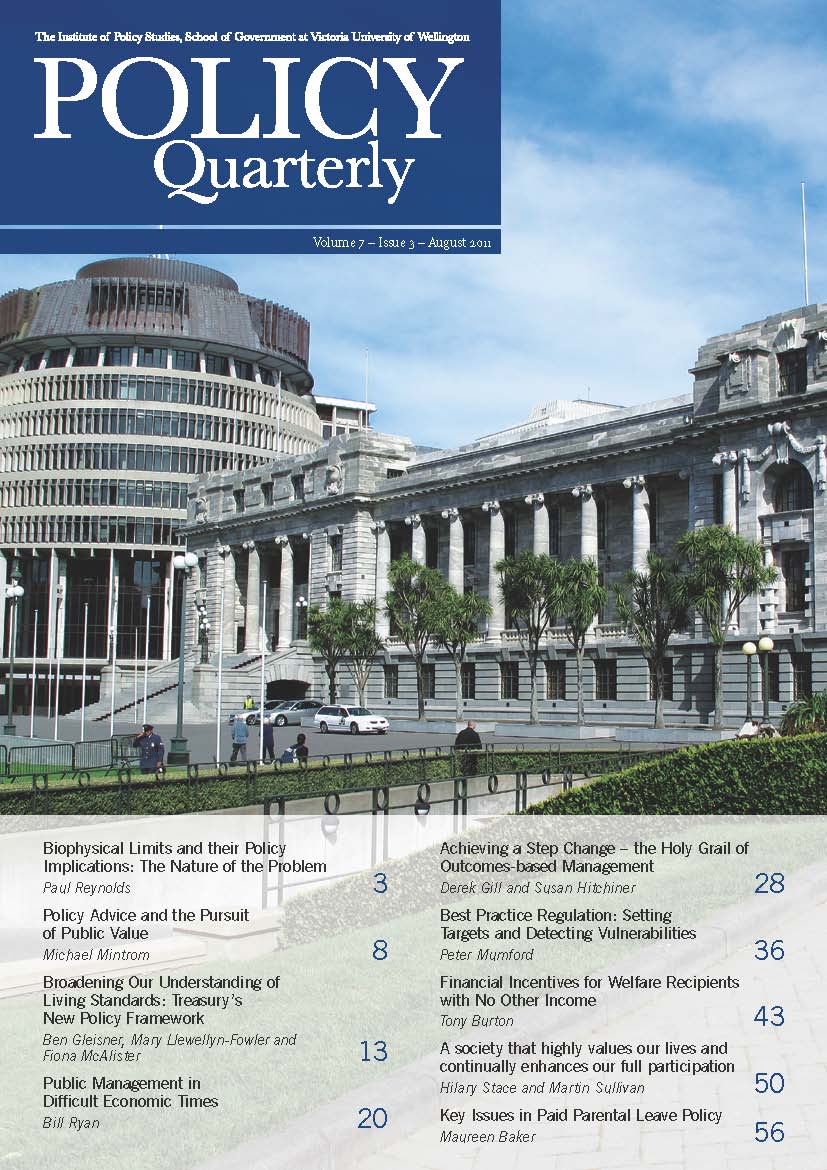Key issues in paid parental leave policy
DOI:
https://doi.org/10.26686/pq.v7i3.4393Keywords:
paid parental leave, New Zealand and Canada welfare regimes, value of parental benefits, Women’s employment rates, employment equity, subsidised child care servicesAbstract
In 2002 New Zealand employees gained access to paid parental leave, but other countries established these benefits much earlier and/or used a mix of policy parameters. This article, which is framed within a comparative and feminist political economy perspective, compares paid parental leave programmes in two countries with similar welfare regimes: New Zealand and Canada. The article argues that delivering these benefits through social insurance, as is done in Canada, could elevate benefit levels for some workers but fewer women employees would tend to qualify.
Downloads
Downloads
Published
Issue
Section
License
Permission: In the interest of promoting debate and wider dissemination, the IGPS encourages use of all or part of the articles appearing in PQ, where there is no element of commercial gain. Appropriate acknowledgement of both author and source should be made in all cases. Please direct requests for permission to reprint articles from this publication to Policy-Quarterly@vuw.ac.nz.



